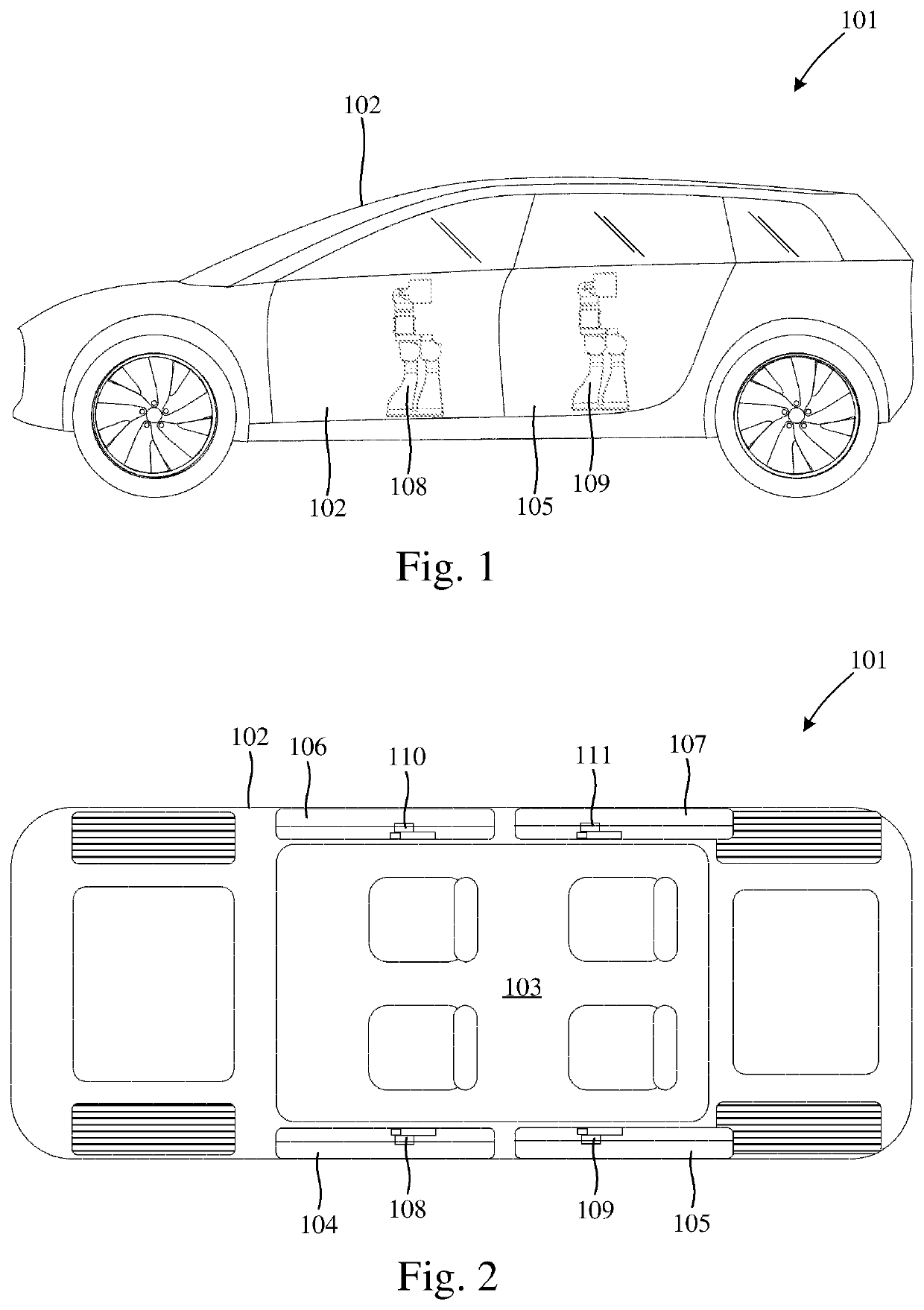Vehicle air conditioning
a technology for air conditioning systems and vehicles, applied in vehicle components, vehicle heating/cooling devices, transportation and packaging, etc., can solve the problems of reducing the amount of work required by the peltier device, heating or cooling the cabin environment, etc., to reduce localised hot or cold regions, reduce the effect of air exchang
- Summary
- Abstract
- Description
- Claims
- Application Information
AI Technical Summary
Benefits of technology
Problems solved by technology
Method used
Image
Examples
Embodiment Construction
[0039]Referring firstly to FIGS. 1 and 2, a vehicle, which in the example takes the form of a passenger car 101, comprises a body structure 102 defining a passenger cabin 103 for accommodating passengers, door openings in the side of the body structure 102 to permit passenger ingress and egress from the cabin 103, and a plurality of doors 104, 105, 106, 107, hingedly connected to the body structure 102 adjacent a respective door opening to selectively close the door opening.
[0040]The car 101 further comprises a plurality of air conditioning systems, 108, 109, 110, 111, for heating or cooling air supplied to the passenger cabin 103. Each of the air conditioning systems 108 to 111 is mounted to a respective door 104 to 107 and includes an inlet and an outlet open to the passenger cabin 103. In the way that will be described further with reference to FIG. 10, each of the air conditioning systems 108 to 111 is operable to draw air from the passenger cabin 103, selectively heat or cool t...
PUM
 Login to View More
Login to View More Abstract
Description
Claims
Application Information
 Login to View More
Login to View More - R&D
- Intellectual Property
- Life Sciences
- Materials
- Tech Scout
- Unparalleled Data Quality
- Higher Quality Content
- 60% Fewer Hallucinations
Browse by: Latest US Patents, China's latest patents, Technical Efficacy Thesaurus, Application Domain, Technology Topic, Popular Technical Reports.
© 2025 PatSnap. All rights reserved.Legal|Privacy policy|Modern Slavery Act Transparency Statement|Sitemap|About US| Contact US: help@patsnap.com



